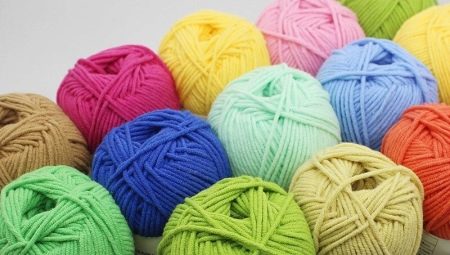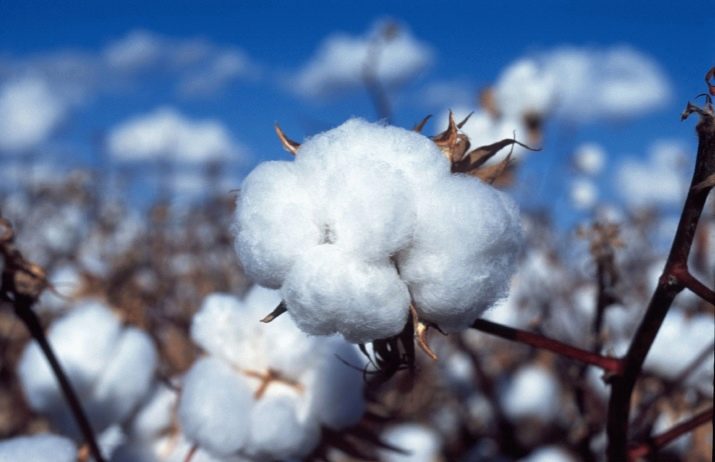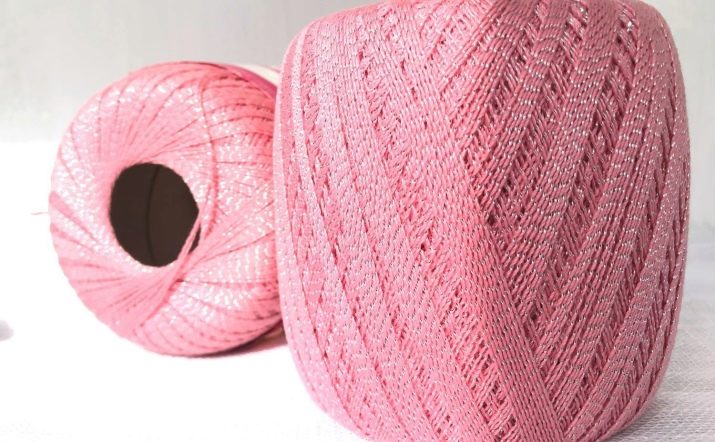Varieties and selection of cotton yarns

Cotton yarn is produced from the fiber of the corresponding plant - cotton. These fibers are classified as natural, as their origin is vegetable. There are state standards according to which this type of product is produced. The quality of cotton yarn depends on many factors - fiber length, processing method, composition, weight and thickness of the thread. This type of yarn has its advantages and disadvantages, it is used in the creation of various products.

Peculiarities
Cotton yarn is one of the most sought-after varieties among clothing manufacturers of all levels. Thanks to the choice of colors, textures, you can create unique things for different purposes - clothes for adults and children, accessories, home textiles. Cotton fiber is durable, hygienic, and suitable for making children's clothes. However, the most appreciated is the blended composition of the yarn, since 100% variation is completely devoid of elasticity.



In addition, the completely cotton fiber shrinks strongly after washing, wrinkles very quickly and strongly.
The following features of cotton yarn are distinguished, among them there are both advantages and disadvantages of the material and products from it:
-
strength, comfort to wear, softness, while silk is stronger than cotton;
-
suitable for creating lightweight products;
-
heat resistance, porosity, which allows you to absorb liquid, but not get wet through;
-
the yarn is absolutely hypoallergenic;
-
resistant to alkali, but unstable to any acids;
-
yarn does not tolerate dampness well, if the threads are in such conditions, decay processes begin, mold appears;
-
if the storage conditions are violated, microorganisms and bacteria can develop in the yarn;
-
cotton fiber strongly absorbs dirt of any type due to bumps and friability, much more actively than other varieties;
-
cotton items require special care, white items can be boiled, colored items require a water temperature of no more than 40 degrees;
-
tumble drying is not suitable for such products;
-
ironing cotton products is not easy, it is important to moisten them with high quality and set the temperature regime corresponding to the material.


The properties of the yarn depend on many factors, such as the processing method and the additives used in the manufacture. Viscose, acrylic give the material strength, increase wear resistance. This makes the yarn lighter. Viscose also increases the tensile properties of the yarn. The addition of wool has the same effect on the material.


If wool and viscose do not completely change the natural status of the yarn, then acrylic does, since it is synthetic.
The processing method can improve the visual qualities of the yarn, give it shine, rich color, increase strength, softness, and pleasant touch. There is a method that improves such quality as crease resistance, the product shrinks less. Accordingly, yarn that has undergone such processing will cost much more, since its properties are significantly improved not only visually.

Views
First of all, cotton yarn for knitting is divided into types according to composition. Cotton in it can be as 100% and 70%, and even 30%. The type and properties of the material change from the amount of percent and the type of additive. Most often, you can find cotton yarn with wool, silk, viscose, bamboo, sometimes cotton and linen are combined in different proportions. The elastic, soft look of the yarn with stretch qualities requires a combination of cotton and elastane.



The organic composition is not the only possible one - the fibers are actively mixed with lurex, acrylic, often polyamide can be found in the composition. A thick twist and a thin thread are used to make various things. In addition, there is a yarn classification based on the fiber processing method.



Mercerized
In this type of processing, the pure material is exposed to alkali. A thread that has undergone this processing method receives a characteristic shine, not too bright, but obvious. But not only the appearance of the yarn was the goal of John Mercer's invention of the method, but also a qualitative change. In addition to the matte texture, the new yarn gets rid of low dye absorption properties.
The thread perfectly absorbs the dye and can be dyed in the brightest and most saturated shades.
Besides, the fabric made from this yarn becomes stronger and better absorbs moisture. Thanks to these properties, the processed thread is not subject to fading in the sun. At the same time, one hundred percent cotton, even after mercerizing more than once, will not have elastic properties. The process does not affect this yarn quality in any way.

Finished
This type of yarn has a good level of stiffness. This method is used when it is necessary to reduce the crease of the finished item.

Unmercerized
This yarn is natural, bleached. It is quite resistant to various chemical influences. Even under the influence of moisture, sunlight, the quality of the fabric does not deteriorate. This type of yarn is poorly dyed, most often muted faded shades are used.

Experts take Egyptian cotton into a separate variety, despite the fact that it undergoes a mercerization procedure. It is recognized as the best among all types of cotton due to its special properties:
-
the longest fiber length and the highest strength;
-
no shrinkage after washing;
-
hypoallergenic, hygroscopic, high level of air permeability;
-
environmentally friendly material.

In the manufacture, only natural ingredients are used, including dyes. The method of mercerizing Egyptian material is as follows.
-
The fibers are soaked in a soda solution, which is carried out under the strict control of auto systems. So they increase wear resistance and strength, increase the ability to retain dyes.
-
The second part of the procedure is fiber bleaching, which removes the alkali solution. After that, the yarn is dyed.
-
Cotton in its pure form is fired with gas-type burners to give the threads the shape of a cylinder and remove lint. After that, the yarn becomes smooth, moderately shiny, without the natural fleece for cotton.

Manufacturers
It is wrong to choose yarn based only on its cost, the manufacturer and characteristics are much more important. The best cotton yarn is produced by brands from different countries, among the leaders are Turkey, Russia, Italy, Spain.
-
Rowan (Italy). It produces various types of yarn, mainly of blended type, there are combinations of cotton with viscose and other additives. The assortment includes openwork, embossed fabric, lace-type yarn from Egyptian material. The thread does not split during knitting, ideal for individual use. From the yarn of this brand, you can knit both dense and light, summer clothes. Among the advantages are naturalness, silky shine, thread strength and high dyeing quality, the thread does not roll, it absorbs moisture well. Among the disadvantages is only the high price.

- Laines Du Nord (Italy). They produce yarn from Peruvian and other types of cotton, the choice of shades is huge. Products made from this material are distinguished by their softness, comfortable fit, and an unobtrusive shine. Absolutely hypoallergenic, ideal for creating baby clothes. The raw materials are of high quality, natural, durable, the products keep their shape perfectly. But there are also disadvantages - the thread can exfoliate if you knit with knitting needles with sharp ends, the price is not very budgetary.

- Katia (Spain). It produces blended and one hundred percent versions of yarn in skeins, hemp is present in the composition. An ideal variation for creating products in boho and ethnic style, there are villi, irregularities that give the impression of hand made. The shades are mostly powdery-pastel, suitable for creating summer clothes, thick clothes. The material is completely natural, the colors are natural, the durability is at a high level. The price segment is above average.

- Alpina, Austria. Produces pure mercerized cotton yarn. The material is suitable for openwork, embossed fabrics, arans, the thread is not subject to splitting, does not twist during the creation of the product, while being soft and loosely twisted. Naturalness, strength, resistance to external influences, hygroscopicity are the advantages of yarn. The choice of shades is not very rich, in addition, many types of products can only be washed by hand. The price segment is medium.

- VITA, Germany. One hundred percent cotton from this company can be bought at a very affordable price. Threads are successfully used to create openwork. The yarn is soft, without hard twisting, does not split, the shine is calm. The range of colors is varied, things are perfectly washed, do not fade, do not lose their shape.

The elasticity of the yarn is low, so it is not suitable for all things.
- Alize, Turkey. Another budget manufacturer of matte cotton yarn. The product does not undergo mercerization, but at the same time it is quite durable and resistant to fading. It is very comfortable to work and wear, you can knit reliefs, arans. Yarn consumption is economical, it can be machine washed, but on delicate modes, the price is budget. There are also disadvantages: low slip, it can get confused.

- Gazzal, Turkey. Produces a variety of blended yarns, including those with synthetic additives. Suitable for creating openwork things, it is comfortable in work, any patterns are easily created, there is no layering, the color range is rich. For blended yarns, the price is not too cheap.

- Pekhorsky Textile (Russia). The assortment includes a large selection of types for hand knitting, including for the manufacture of children's products. Mercerized 100% cotton product is very popular. Hypoallergenic yarn with good hygroscopicity, budget price.

How to choose?
First of all, it is important to focus on the product that is planned to be made from yarn. For example, a dress is heavier in weight than a top, therefore, it is more prone to stretching. For knitting a dress, a yarn is suitable that is light in weight, thin in structure, without additives that stimulate stretching.

Mixed options with viscose, elastane are not suitable for such purposes.
Also consider the pattern used for knitting. The cobweb will turn out neater from tightly twisted threads. Openwork things for the cold season are best knitted from loose and thick yarn. The more the thread is twisted, the lower the risk of splitting during knitting. But the rigidity of such yarn increases, so it will not be possible to achieve a delicate structure of the product. Rigid twist is a good choice for hats, accessories and fishnet ornaments.


When buying Egyptian cotton yarn, it is important to distinguish it from a fake, as this product is very expensive. To exclude the purchase of a fake, take the following measures:
-
set fire to a piece of thread, the genuine one will burn without residues, and the aroma will resemble burning paper;
-
crumple the threads and hold, holding them in your hand, if they are very wrinkled, in front of you is a fake;
-
run your hand over the surface - the roughness should not be felt.

Moreover, this type of cotton cannot be cheap.
What is it used for?
Since knitting from cotton is an easy process, it is suitable for handcrafting different things. From products of this type, knitting, crocheting, clothes for adults and children, home textiles, accessories. Fine yarns are ideal for lightweight, summer garments that are comfortable to wear on the naked body. Sock yarn is also made from cotton. Thick, loose, suitable for making a blanket, cardigan, and other off-season clothing.




Since the yarn is available in a wide range of colors, there is no problem to choose it for any product. Experts recommend knitting from cotton with bamboo or wooden knitting needles. The denser the fabric is required, the smaller the size of the needles must be taken. Blended fabrics are the optimal solution for the independent knitting process.


Before knitting a product, it is worth forming a sample, washing it and checking the degree of shrinkage and loss of color.








